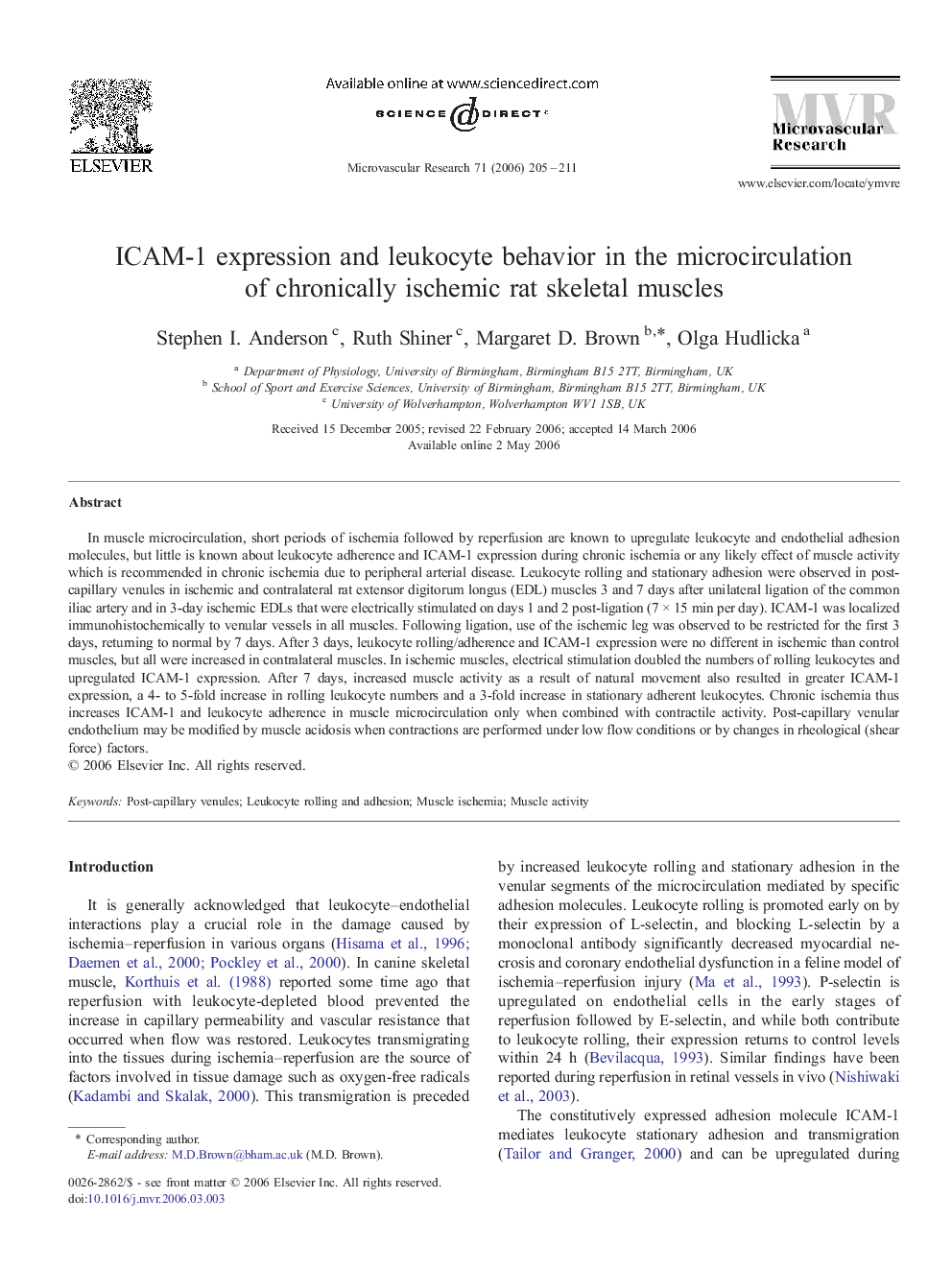| Article ID | Journal | Published Year | Pages | File Type |
|---|---|---|---|---|
| 1995437 | Microvascular Research | 2006 | 7 Pages |
In muscle microcirculation, short periods of ischemia followed by reperfusion are known to upregulate leukocyte and endothelial adhesion molecules, but little is known about leukocyte adherence and ICAM-1 expression during chronic ischemia or any likely effect of muscle activity which is recommended in chronic ischemia due to peripheral arterial disease. Leukocyte rolling and stationary adhesion were observed in post-capillary venules in ischemic and contralateral rat extensor digitorum longus (EDL) muscles 3 and 7 days after unilateral ligation of the common iliac artery and in 3-day ischemic EDLs that were electrically stimulated on days 1 and 2 post-ligation (7 × 15 min per day). ICAM-1 was localized immunohistochemically to venular vessels in all muscles. Following ligation, use of the ischemic leg was observed to be restricted for the first 3 days, returning to normal by 7 days. After 3 days, leukocyte rolling/adherence and ICAM-1 expression were no different in ischemic than control muscles, but all were increased in contralateral muscles. In ischemic muscles, electrical stimulation doubled the numbers of rolling leukocytes and upregulated ICAM-1 expression. After 7 days, increased muscle activity as a result of natural movement also resulted in greater ICAM-1 expression, a 4- to 5-fold increase in rolling leukocyte numbers and a 3-fold increase in stationary adherent leukocytes. Chronic ischemia thus increases ICAM-1 and leukocyte adherence in muscle microcirculation only when combined with contractile activity. Post-capillary venular endothelium may be modified by muscle acidosis when contractions are performed under low flow conditions or by changes in rheological (shear force) factors.
